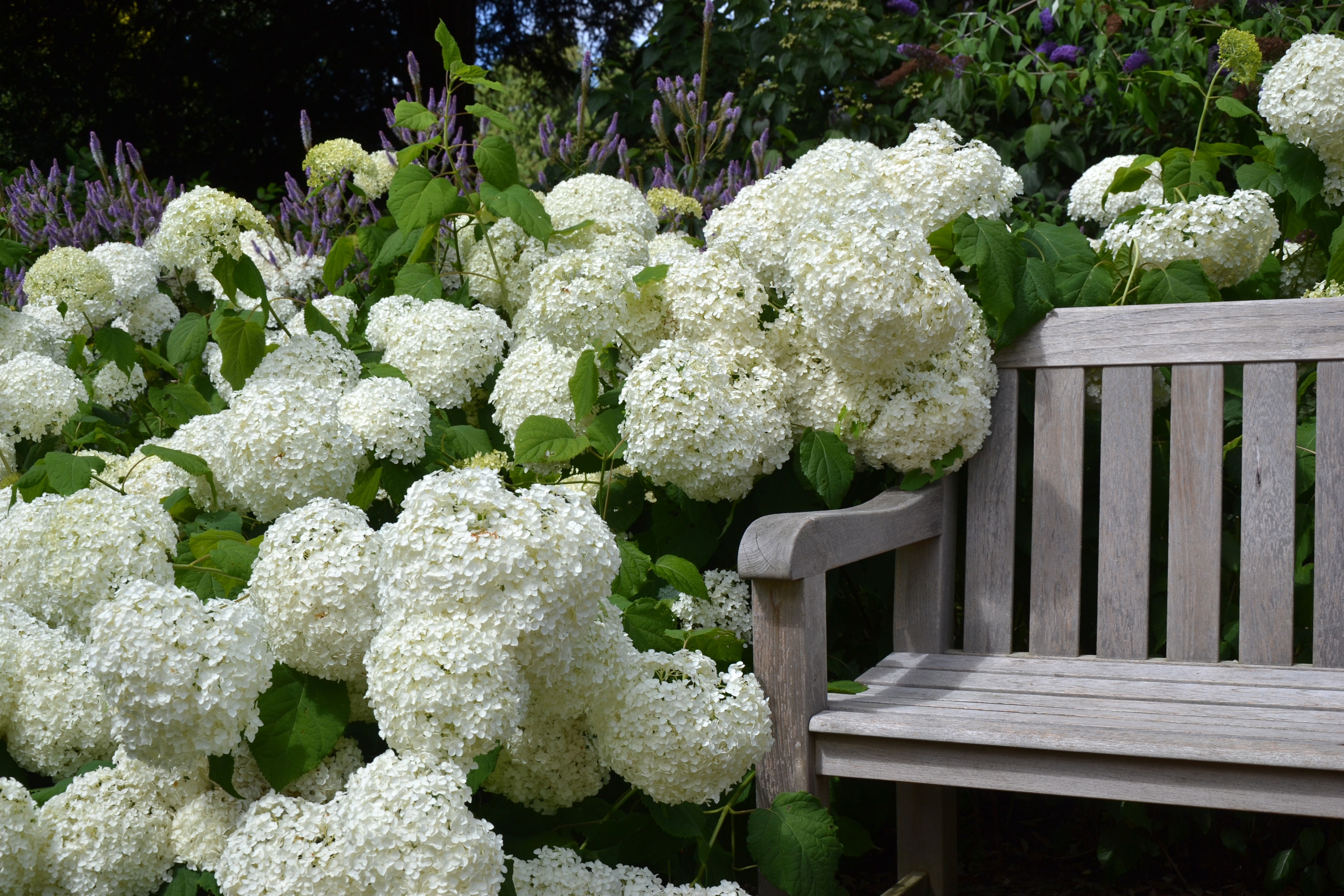
Hooked on Hydrangeas
With names like Endless Summer, Incrediball, Vanilla Strawberry, Shooting Star, Pistachio, Fuji Waterfall, Snow Queen and Glowing Embers, who could resist the temptation to grow hydrangeas? There are over 70 species native to Asia and America, and over 700 varieties of this diverse group of plants, although not all are in cultivation. From two foot miniatures to eighty foot monster vines, there are plenty of styles, shapes and sizes to please any avid gardener and plant collector. Flamboyant flowers and dark green lustrous foliage give hydrangeas their alluring appearance. Many are fabulous cut flowers too! Here are some basic care guidelines for hydrangeas.
Soil: Hydrangeas prefer a loose, compost like, acidic based mix, with good drainage. Central Valley carries EB Stone Azalea, Camellia & Gardenia Planting Mix, which is perfect for hydrangeas as well.
Light: Filtered light, light shade, or morning sun is best, as most hydrangeas can get sunburned in our mid summer heat. Hydrangea paniculate ‘Limelight’ can tolerate more sun than other hydrangeas.
Water: Hydrangeas appreciate a moderate, regular amount of water. They don’t need or want to be constantly wet, but also will let you know if they are too dry, as they will wilt. Luckily, they normally rebound quickly when watered.
Feeding: All plants benefit from regular fertilizer applications, and hydrangeas are no exception. As with the acid based soil, an acid based fertilizer is best, and we carry EB Stone Organics Azalea, Camellia, and Rhododendron Plant Food. Although the label does not say ‘hydrangea’, if you don’t show your plants the box, they won’t know the difference!
Pruning: Each grouping has different pruning requirements: timing, what to prune, and how much. Please ask one of our nursery associates for detailed information about your specific varieties.
Color Changers: Are you bored of Blue? Has Pink become too pedestrian? Well, with pink and blue macrophylla mopheads, you can change their color back and forth from year to year. How cool is that! To make pink ones blue, add EB Stone’s True Blue aluminum sulphate starting in the fall, which acidifies the soil. And to make blue ones pink, add EB Stone’s Agricultural Lime, which takes acidic soil to neutral or alkaline. Impress and amaze your neighbors and friends with this handy trick.
Types of Hydrangeas
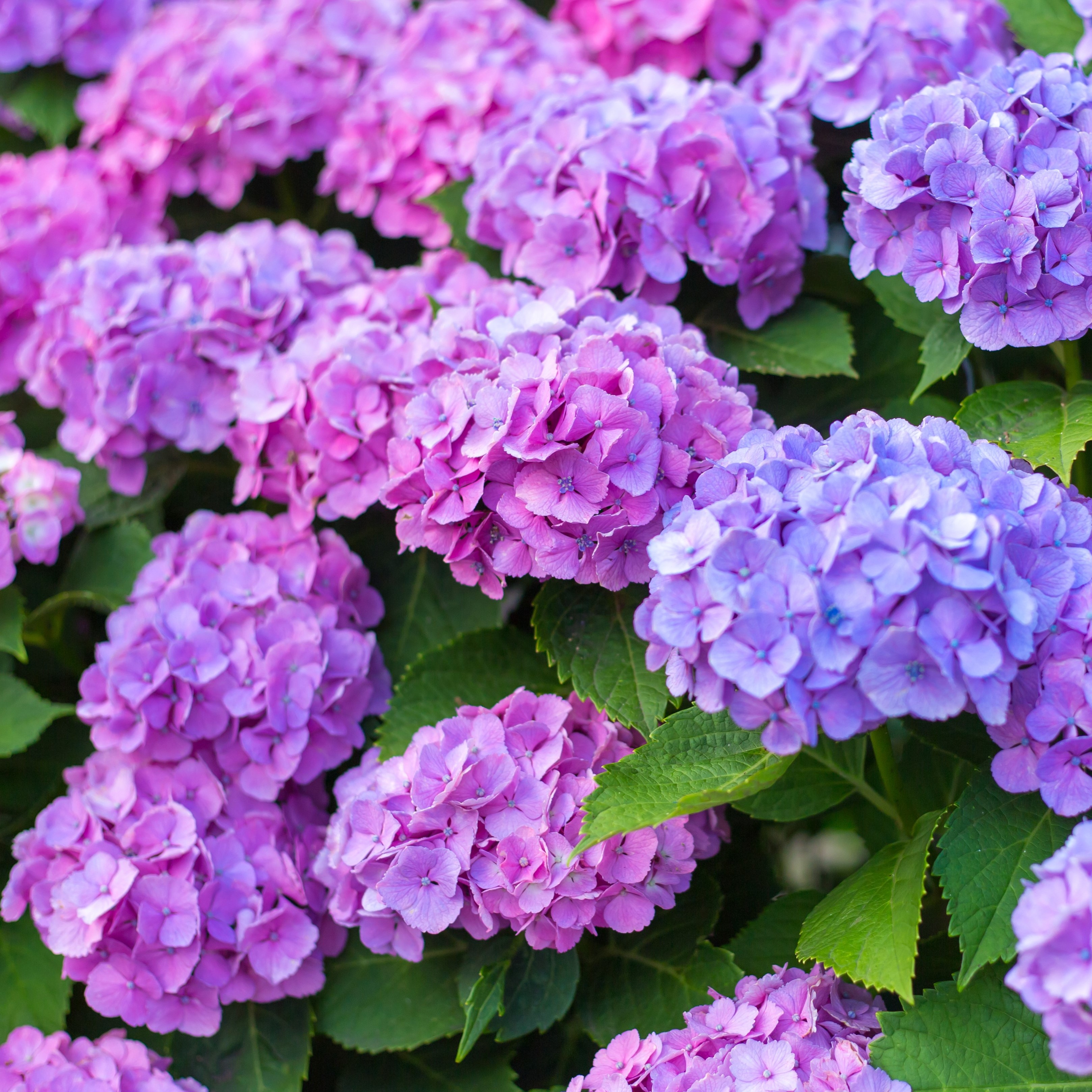 Macrophyllas: These comprise the classic looking ‘mophead’ type hydrangeas, with medium to large rounded flower clusters that are available in shades of blue, lavender, purple, pink, red and white. Also, within this group are ‘lacecaps’, which have a fairy ring of large florets that encircle a multitude of tiny flowers, giving these a more delicate, dainty look. Most of the macrophyllas are spring bloomers, but there are some repeat bloomers, such as Endless Summer, that will bestow a second set of flowers in the summer.
Macrophyllas: These comprise the classic looking ‘mophead’ type hydrangeas, with medium to large rounded flower clusters that are available in shades of blue, lavender, purple, pink, red and white. Also, within this group are ‘lacecaps’, which have a fairy ring of large florets that encircle a multitude of tiny flowers, giving these a more delicate, dainty look. Most of the macrophyllas are spring bloomers, but there are some repeat bloomers, such as Endless Summer, that will bestow a second set of flowers in the summer.
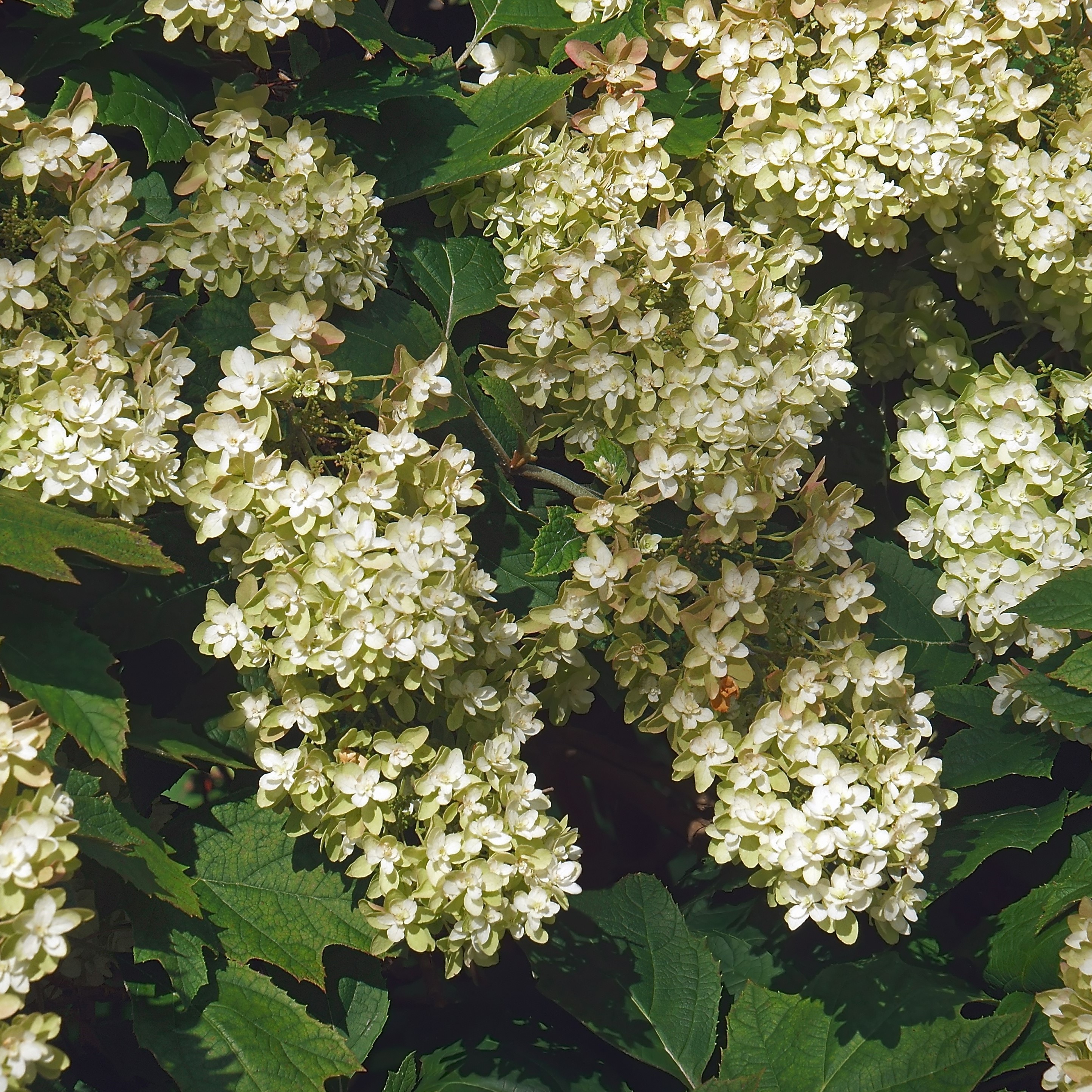 Quercifolias: ‘Oakleaf’ hydrangeas. These have leaves that are shaped like oak tree foliage and have the distinction from other hydrangeas of changing color from green to orange, red and mahogany in the fall, before going dormant, and then showing off their cinnamon colored bark. Most of the oakleafs are white flowered and conical shaped, with some varieties turning pink to red as the flowers age.
Quercifolias: ‘Oakleaf’ hydrangeas. These have leaves that are shaped like oak tree foliage and have the distinction from other hydrangeas of changing color from green to orange, red and mahogany in the fall, before going dormant, and then showing off their cinnamon colored bark. Most of the oakleafs are white flowered and conical shaped, with some varieties turning pink to red as the flowers age.
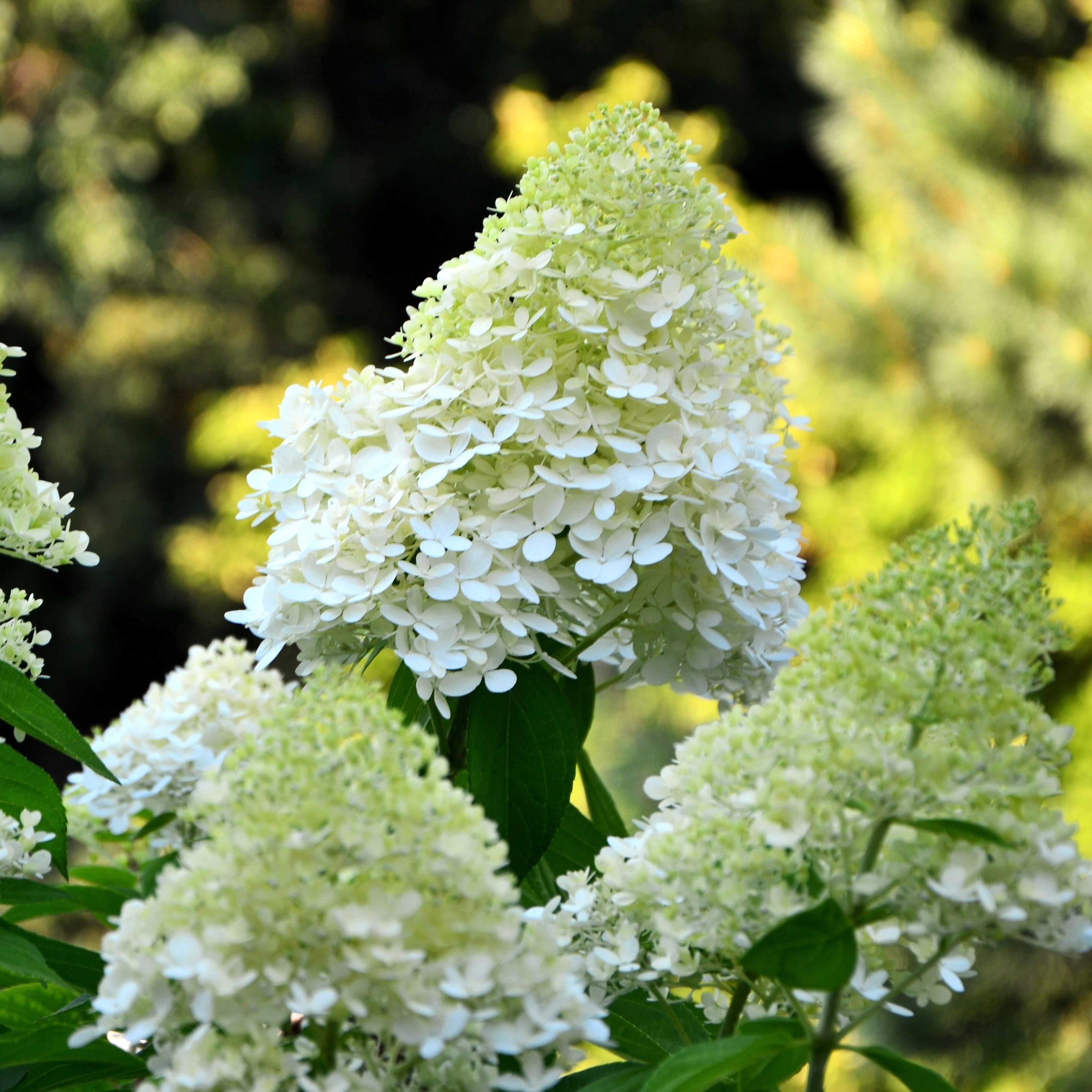 Paniculatas, or ‘panicle’ hydrangeas, have stunning cone shaped flower clusters, in white, lime green, and some with variations of pink. “Limelight’ has unique green flowers, and “Vanilla Strawberry’ sports a two tone effect with white and pink florets. Panicle hydrangeas come in bush form, but also are the only type that can be trained into a small tree.
Paniculatas, or ‘panicle’ hydrangeas, have stunning cone shaped flower clusters, in white, lime green, and some with variations of pink. “Limelight’ has unique green flowers, and “Vanilla Strawberry’ sports a two tone effect with white and pink florets. Panicle hydrangeas come in bush form, but also are the only type that can be trained into a small tree.
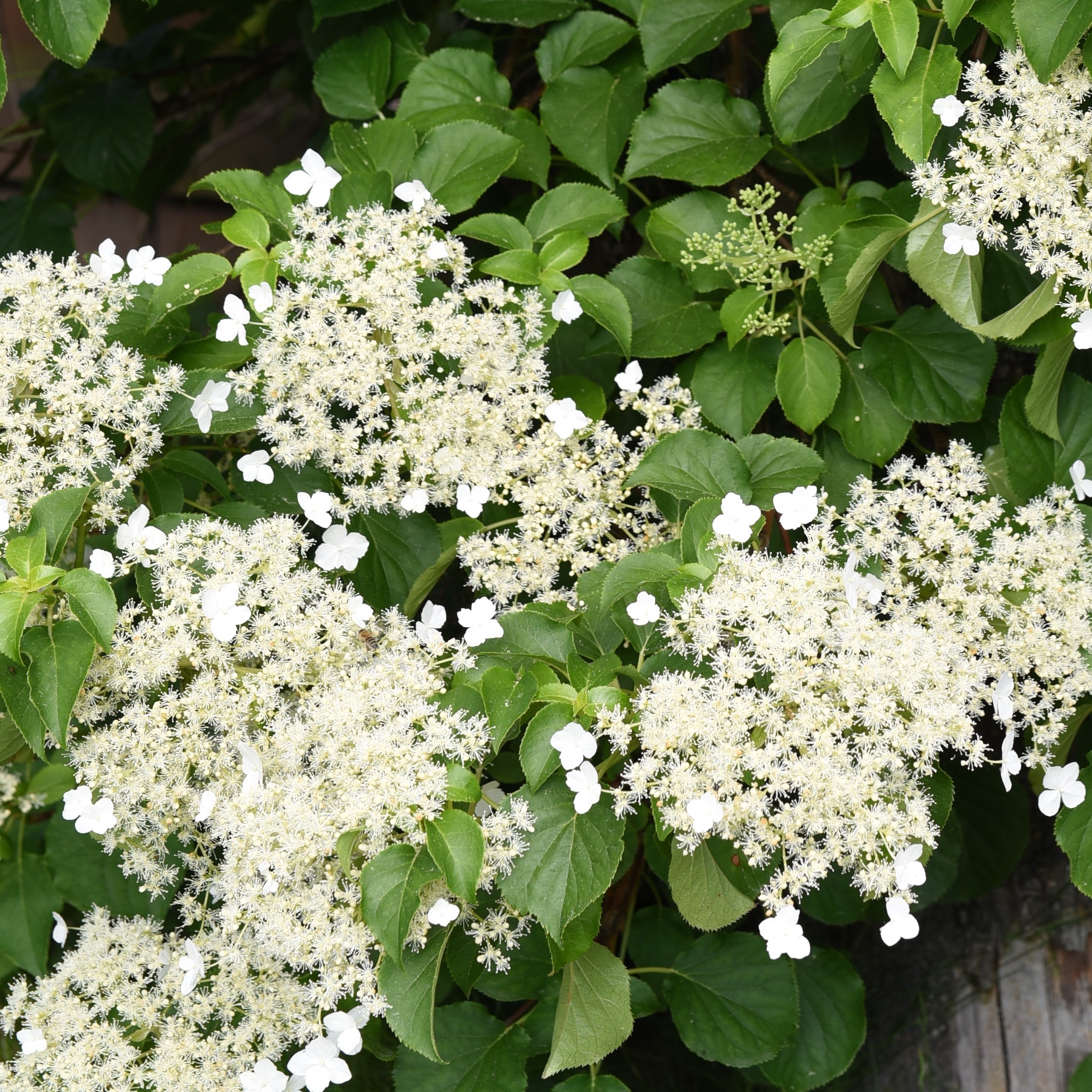 Petiolaris or ‘Climbing’ hydrangeas are unlike any other hydrangeas, as they climb and cling to trees, wood and stucco, on their journey upward. These are plants to carefully consider placement of, as some can attain a height of up to 80 feet...that is a formidable vine. An additional bonus with these is some are fragrant, unlike most of their cousins.
Petiolaris or ‘Climbing’ hydrangeas are unlike any other hydrangeas, as they climb and cling to trees, wood and stucco, on their journey upward. These are plants to carefully consider placement of, as some can attain a height of up to 80 feet...that is a formidable vine. An additional bonus with these is some are fragrant, unlike most of their cousins.
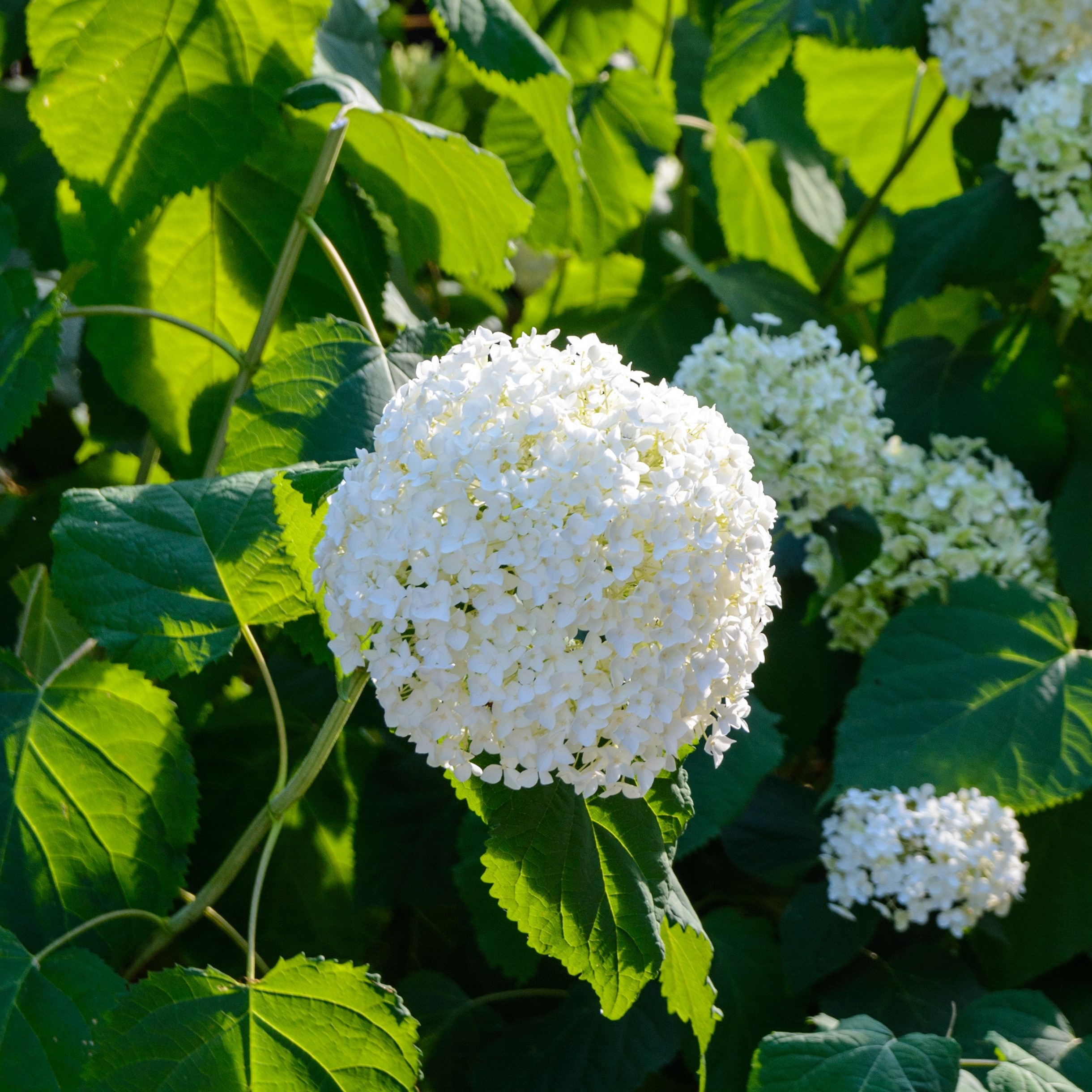
Arborescens have lighter green foliage, but have amazing ball shaped white flower clusters. ‘Annabelle’ is one of the best known varieties, and also the aptly named ‘Incrediball’, which sports huge, snowball flowers.
So, if you are wanting to add some bursts of color and fullness to your shade or semi shade garden, think hydrangeas. They will give you years and years of beauty and joy as their new leaves emerge in the spring and are followed by gorgeous trusses of flowers that hold their form well, as they age and mature through their bloom cycles. With so many types, varieties, shapes, sizes, bloom cycles and color choices, there is a hydrangea for everyone.
Mark Erickson
Plant Buyer



